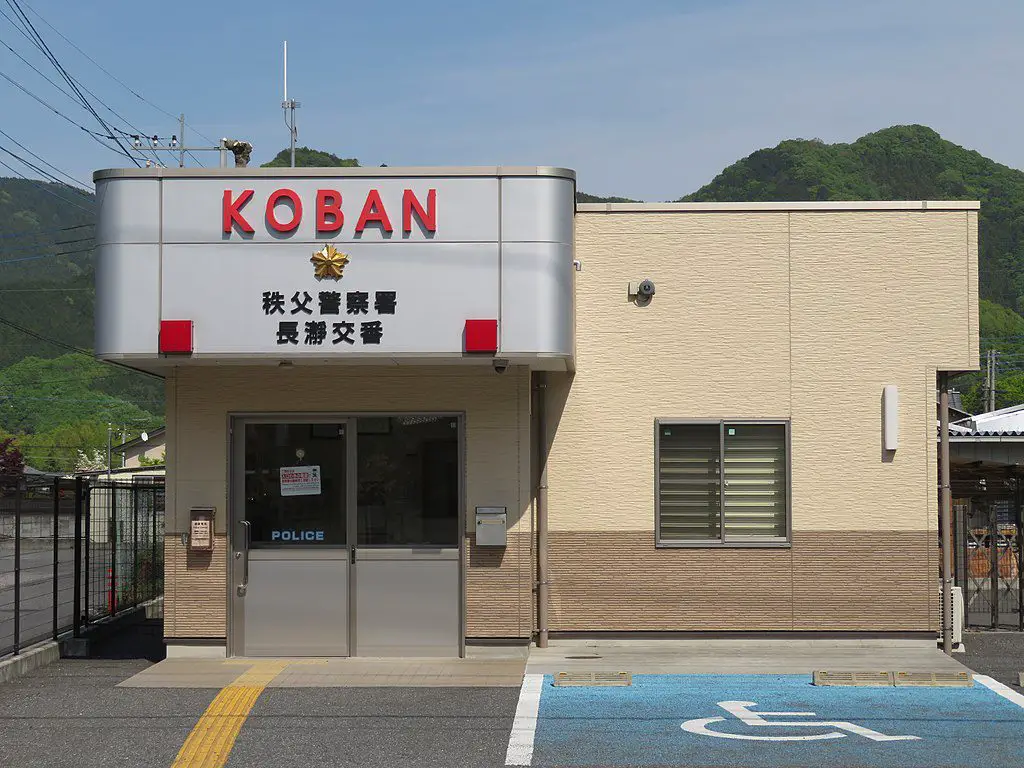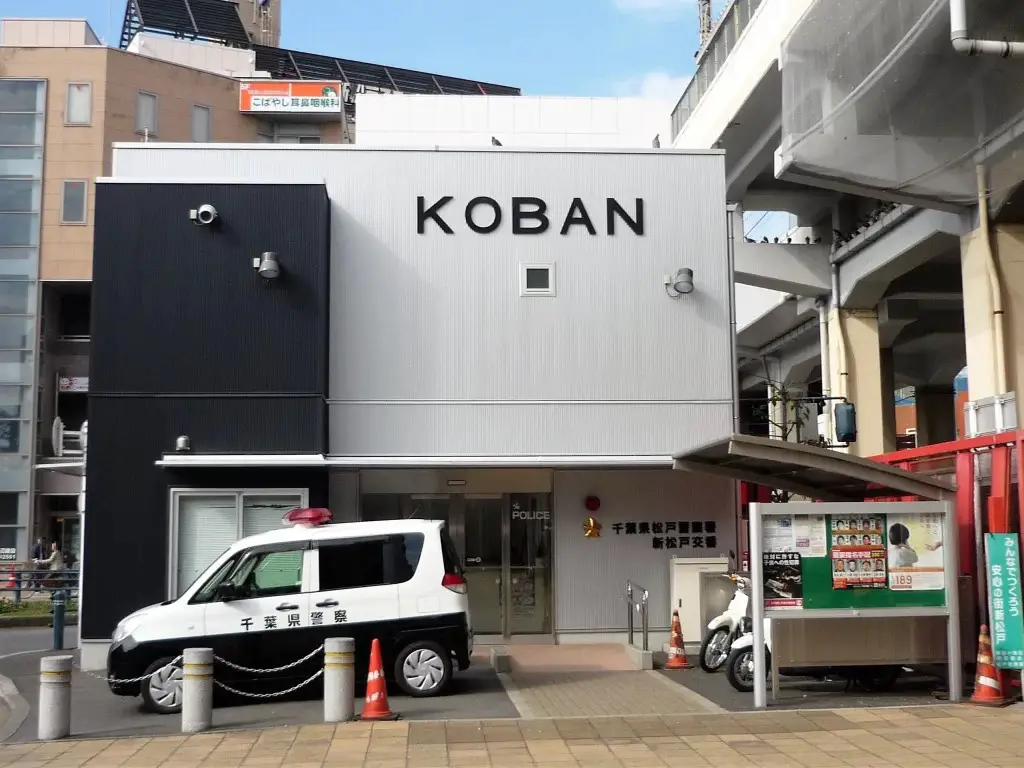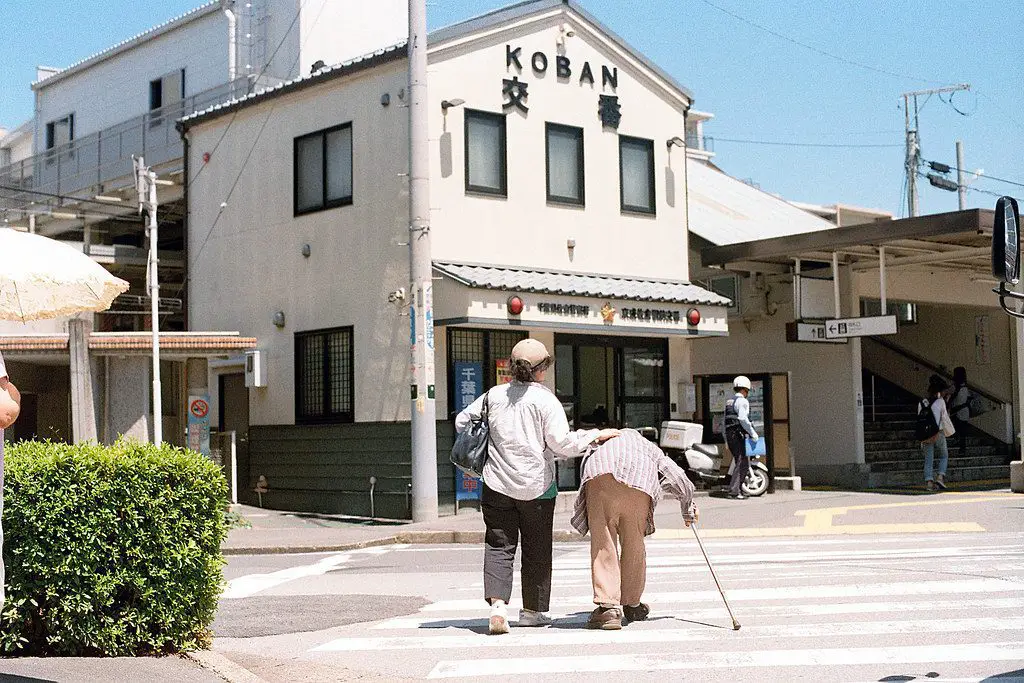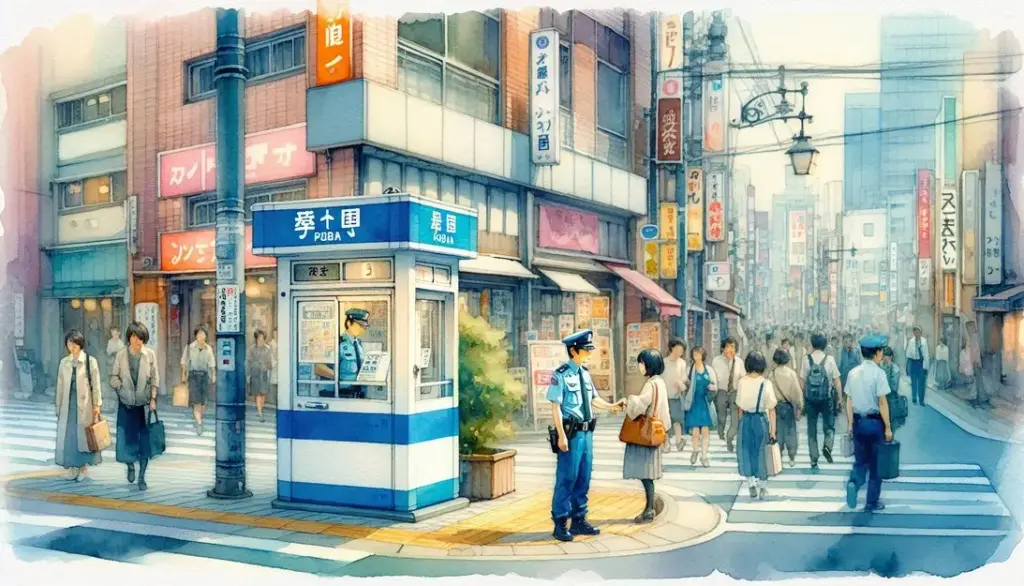Ever walked past a small, tidy building on a street corner in Japan and wondered what it is? That’s a Koban—a neighborhood police station. These compact hubs are more than just a place for law enforcement; they’re essential to keeping communities safe. Koban officers patrol the area, help with lost items, and even assist with directions. Their 24/7 presence fosters trust and keeps neighborhoods connected. As a symbol of Japan’s focus on safety and harmony, Koban play a quiet but vital role in daily life.
The History of Koban
The concept of Koban, Japan’s unique police box system, has a rich history. This system evolved from humble beginnings into a cornerstone of Japanese neighborhood safety. Its development reflects the country’s dedication to building trust between the police and the community.
Development of Koban System
The Koban system traces its roots back to the early days of modern Japan’s policing efforts. The idea began in 1874, with the Tokyo Metropolitan Police Department creating small shelters, or “Kobansho,” to house police officers who patrolled nearby streets. These shelters weren’t just functional; they symbolized a growing emphasis on public safety in urban areas.
By 1881, the structure and utility of these shelters were refined. They were renamed “Hashutsusho,” translating loosely to “police box,” as they became established at key points in towns and cities for easy accessibility. Officers stationed there were tasked with crime prevention, conflict resolution, and providing community assistance.
Over time, several improvements were made to make Koban more efficient. By the 1970s, Japan began formalizing this system further, methodically placing these police boxes across neighborhoods to ensure comprehensive coverage. Today, there are around 6,000 Koban scattered all across the country, each playing a pivotal role in community policing. You can learn more about the historical evolution of Koban here.
From Watch Boxes to Modern Koban
In the beginning, Koban were little more than “watch boxes,” simple shelters where officers could take refuge between patrol duties. These watch boxes represented an era where the focus was on visible patrolling to deter crime, rather than the interactive policing we see today.

The transition to modern Koban began when they were integrated more deeply into the fabric of the community. Designs changed to include permanent structures with specific functions tailored to local needs. By the mid-20th century, Koban had become a multi-purpose facility. Besides crime prevention, they were used as informational hubs where citizens could seek directions, report incidents, and even ask for advice.
Interestingly, the Koban model adapted as urbanisation increased by placing its stations in high foot traffic areas, such as train stations, shopping districts, and residential neighbourhoods. Today’s Koban combines functionality with iconic architecture. Some even double as showcases of modern Japanese design, like the striking police box in Fukuyama, as detailed here. These small yet significant structures ensure police presence remains approachable and relatable to the public.
From the simple days of watch boxes to cutting-edge community stations, Koban have genuinely stood the test of time, becoming an integral part of Japan’s unique approach to policing.
What Makes Koban Unique?
Koban isn’t just a police station—it’s a community hub. These tiny but significant structures go beyond enforcing the law. From guiding lost travelers to bridging connections between police and locals, Koban embodies Japan’s commitment to safety, service, and community harmony.
Services Offered by Koban
Imagine needing help with directions, reporting a crime, or looking for a lost wallet. Where would you go in Japan? The answer: the nearest Koban. These small police stations offer a wide range of services that cater to locals and visitors alike.
- Directions and Local Guidance: Lost in an unfamiliar area? Koban officers are your go-to navigators. With maps and local knowledge, they can help you find your way effortlessly.
- Lost and Found: Misplaced items find their way home thanks to the Koban system. It’s not uncommon for wallets, phones, and even umbrellas to be reunited with their owners via Koban.
- Crime Reporting: Whether it’s a minor incident or something more serious, Koban is the first point of contact for filing reports and seeking help.
- Emergency Assistance: From first-aid support to immediate responses to emergencies, Koban officers act swiftly to protect and assist.
Officers stationed in Koban are approachable too. Their focus isn’t just on enforcing rules but also on helping anyone in need. Learn more about the numerous services offered by Koban here.
Koban Locations and Design
Koban are strategically located to ensure easy access. You’ll spot them in bustling areas where people naturally gather:
- Near train stations, where commuters might need directions.
- In shopping districts, where foot traffic is heavy.
- Around residential neighborhoods, maintaining safety where it matters most.
Architecturally, Koban is as versatile as it is functional. Some boast minimalist, modern designs, while others stick to a traditional look. Take, for instance, the uniquely designed Koban at Kumamoto, which combines practicality with creativity. Koban aren’t just efficient; they’re also visual landmarks in Japan’s urban landscape. Read more about Koban locations and their unique designs here.

Community Policing and Engagement
A Koban isn’t just a building—it’s a bridge between law enforcement and the people. Community policing lies at the heart of its operation. Officers don’t just wait for issues to arise; they actively engage with the local population.
How do they do this? Through simple acts of kindness and proactive communication.
- Officers are known to greet children on their way to school, fostering feelings of safety and trust.
- They participate in neighborhood events, breaking down barriers and showing that they’re part of the community too.
- Support extends to helping solve local issues, no matter how small.
This approach doesn’t just maintain safety—it builds lasting relationships. By being embedded in the community, Koban represent a policing model that feels personal and human. Want to dig deeper into the community-focused model of Koban? Check it out here.
Every aspect of Koban, from its services to its design and community presence, contributes to a safer, more cohesive society. It’s a fascinating blend of functionality and personal connection—trademarks of Japan’s approach to community well-being.
Types of Koban
When it comes to understanding “What is Koban,” it’s essential to recognize the diversity in their forms and functions. Koban isn’t one-size-fits-all; they vary depending on their location and purpose. They adapt seamlessly to meet the unique challenges of both urban and rural settings.
Urban Koban
Urban Koban are small police stations typically found in cities. Their design emphasizes accessibility for people navigating densely populated areas. You might spot them near busy train stations, shopping centers, or major intersections.
These compact hubs are designed for efficiency. Urban Koban officers focus on high-speed response, maintaining public safety where the foot traffic is heavy. They act as the first point of contact for various issues, from assisting lost tourists to handling minor disputes. These stations often deal with a mix of locals and international visitors, ensuring they’re equipped with multilingual resources to help everyone.
Officers stationed here are often familiar with the neighborhood’s pulse. Need directions to an obscure ramen shop? They’ll likely know it. Lost a wallet? There’s a strong chance it might be waiting for you here. Urban Koban bring the concept of community policing to life even in the busiest environments. Learn more about how urban Koban adapt to city networks here.
Chuzaisho: Rural Police Boxes
While Urban Koban are designed for cities, Chuzaisho serve rural areas, with a unique, family-centered twist. Imagine a cozy police box that doubles as the officer’s home. That’s a Chuzaisho. Here, the officer often lives on-site with their family, fully integrating into the community.
In a rural setting, police work isn’t just about enforcing laws—it’s about being a trusted figure in the neighborhood. Officers stationed in a Chuzaisho know their neighbors personally, attend local events, and are often available for everything from emergency help to casual advice. Their families, too, naturally become part of the community fabric.
This level of integration allows for extraordinary trust and collaboration. In sparsely populated areas, where everyone knows one another, the officer acts less like a distant authority figure and more like a community member with special training. Discover more about the Chuzaisho structure and purpose here.
Both Urban Koban and Chuzaisho highlight the adaptability and effectiveness of Japan’s approach to policing. Whether you’re in the bustling streets of Tokyo or a small countryside village, there’s a Koban nearby, tailored to the needs of the area. This is what makes the Koban system so unique and indispensable.
International Influence of the Koban System
The Koban system of community-oriented policing has gained attention worldwide. Its focus on crime prevention, community building, and approachability has inspired several countries to adapt similar practices to meet their unique needs. As societies look for ways to integrate trust-building into law enforcement, the Koban model offers a proven blueprint for fostering safety and public cooperation.

Countries Adopting the Koban Model
The success of the Koban system in Japan has not gone unnoticed. Several countries, particularly in Latin America and Asia, have embraced elements of this policing style to address local issues.
- Brazil: Brazil adopted the Koban model to combat crime and establish stronger community ties, especially in urban areas. The system has been instrumental in improving relationships between citizens and law enforcement. Learn more here.
- Indonesia: With assistance from Japan International Cooperation Agency (JICA), Indonesia implemented Koban-style community policing, adapting it to its unique social and cultural dynamics.
- Mongolia: Mongolia has integrated Koban principles in its policing strategies, focusing on localized crime prevention and immediate community services. More details are available here.
- Honduras: The Koban system was introduced as part of efforts to address high crime rates and enhance public safety in Honduran neighborhoods.
- Singapore: As part of its goal to improve public engagement and reduce crime, Singapore adopted a modified version of the Koban model.
These countries highlight how adaptable the Koban concept is. It’s not simply duplicated but tailored to fit the cultural and crime-related contexts of each nation.

Photo by NastyaSensei
Effects on Crime Reduction
One of the most significant draws of the Koban model is its proven impact on reducing crime rates and fostering safer communities. This is achieved through its proactive approach to policing and the consistent presence of officers.
- Enhanced Deterrence: The 24/7 presence of police officers in Koban areas dissuades potential offenders. Visible policing helps to create a sense of order and accountability.
- Community Cooperation: In countries like Brazil and Indonesia, the Koban model has encouraged stronger collaboration between citizens and police. Crime prevention often starts with better information sharing.
- Localized Monitoring: By situating police boxes in busy or crime-prone neighborhoods, Koban officers can address potential problems before they escalate. Regular patrols and familiarity with the community further improve responses.
- Public Trust: The emphasis on approachability makes communities more willing to report crimes, leading to quicker resolutions and better overall safety. Find insights into how Koban reduces crime here.
- Reduction of Violent Crime: In places like Honduras, integrating the Koban style has shown promise in reducing instances of violent crime. Consistent presence and active engagement play key roles in building safer environments.
While the Koban model isn’t a one-size-fits-all solution, its adaptability and effectiveness make it a valuable framework for improving community safety globally. By focusing on trust, visibility, and local problem-solving, it continues to leave a mark far beyond Japan’s borders.
Modern Challenges and Innovations in the Koban System
The Koban system remains a cornerstone of safety and security in Japan, but adapting to modern demands is crucial. From assisting an increasingly global audience to leveraging cutting-edge tools, Koban have transformed to meet 21st-century challenges head-on. Here’s how this iconic system stays relevant today.

Multilingual and Tourist-Friendly Services
Japan, known for its attentive hospitality, has extended this ethos to its policing through Koban. With millions of international visitors each year, the system has adapted to cater to tourists and non-Japanese residents more effectively.
- Many Koban now feature multilingual signs and information desks to assist foreign visitors. English is the most common secondary language, but some larger cities even support languages like Chinese and Korean.
- When language barriers arise, officers often rely on translation apps or telephone-based interpreting services to understand and assist.
- In areas with high foot traffic, such as Tokyo and Kyoto, Koban officers undergo basic language training to help with simple directional queries or situations requiring immediate attention.
- Emergency resources for tourists, such as maps, safety pamphlets, and local guides, are readily available.
The focus on accessibility ensures that even visitors unfamiliar with Japanese culture or language feel safe and supported. In Kyoto, for instance, an interpreting service can be accessed directly from some Koban if an English-speaking officer isn’t available. Learn more about multilingual efforts in Koban here.
Leveraging Technology for Better Policing
By integrating new technologies, Koban stations have stayed ahead in ensuring safety and efficiency. These advancements reflect Japan’s ability to blend tradition with innovation.
- AI-Based Crime Prediction: Some regions in Japan now use AI systems to predict crime trends and deploy resources accordingly. This helps officers stationed at Koban focus on prevention, saving time and enhancing safety outcomes. Explore how AI is changing policing here.
- Mobile Patrol Systems: Officers utilize GPS-equipped devices to map out patrols and respond swiftly. This ensures they can cover vast areas while maintaining a steady rhythm of surveillance.
- Digital Reporting and Tracking: At modern Koban, you can report lost items or file complaints digitally. This streamlined process allows both residents and tourists to access services without delay.
- Surveillance Integration: Cameras stationed near busy areas such as train stations are linked with Koban. Real-time monitoring lets officers act on incidents immediately.
- Interactive Kiosks: In cities like Tokyo, some Koban have installed interactive kiosks where people can look up local information, report issues, or access emergency contacts.

Photo by Pavel Danilyuk
The integration of technology doesn’t detract from the personal, approachable nature of Koban. Instead, it strengthens their ability to serve communities in an increasingly digital world. By balancing human touch and high-tech tools, the Koban system continues to evolve without losing its essence.
Why Koban Are Integral to Japanese Society
Koban is more than just a place where police officers work. It’s a vital symbol of safety, trust, and community across Japan. These small police stations, scattered throughout neighborhoods, are key to maintaining social harmony. Their presence promotes a sense of security and connects police with the people they serve.
Enhancing Everyday Life
Koban is an essential part of daily life in Japan. How? By being everywhere you need them. Imagine losing your wallet or getting lost in a city. You can count on a nearby Koban for help. Their officers are trained not only to address serious matters but also to assist in everyday situations.
- Problem Solvers: From lost items to missing family members, Koban officers handle it all promptly.
- Local Guides: Unfamiliar with the area? Officers provide directions and advice like true locals.
- Emergency Responders: These stations are first responders in emergencies, whether small or life-threatening.
This makes Koban more than police stations—they’re lifelines and guides through Japan’s orderly society. Find out more about how Koban impacts daily life here.

Building Trust Between Police and Citizens
Koban builds bridges, not walls. Unlike traditional policing models, they focus on collaboration with the public. This relationship fosters a sense of mutual respect and trust.
- Approachable Officers: Unlike intimidating law enforcement personas, Koban officers greet you with a smile.
- Community Integration: Officers participate in local events, making them familiar faces in the neighborhood.
- Accessible Stations: Strategically located for convenience, they never feel distant or disconnected.
This approach helps discourage crime and creates a safer, tighter-knit society.
Crime Prevention Through Strong Presence
Koban has a unique preventive approach unlike any other. Their focus is not just on solving crime but stopping it before it happens. Officers patrol regularly and maintain a visible presence, discouraging illegal activities. Neighborhood familiarity allows them to identify unusual behavior swiftly.

Photo by Evgeny Tchebotarev
This presence reflects on how Japan achieves notably low crime rates compared to many other nations. Learn more about the safety contributed by Koban here.
A Reflection of Japanese Values
The Koban mirrors Japan’s societal priorities: community, respect, and functionality. Through their services, Koban promotes order without overwhelming the public. They embody Japan’s cultural emphasis on harmony and mutual assistance.
Koban isn’t just a system; it’s a tradition. One that showcases how Japan values the well-being of both its citizens and visitors. Their timeless relevance in Japanese society highlights their indispensable role.
Conclusion
Koban stands as a remarkable symbol of community, trust, and safety in Japan. These small but mighty police stations do far more than enforce laws—they create a sense of security that’s woven into daily life. Whether through their quick assistance with lost items, approachable officers, or strategic locations, they reflect a unique balance of functionality and human connection.
Their influence has even reached beyond Japan, inspiring other countries to adopt similar practices in community policing. Koban aren’t just a part of Japan’s streets; they’re a reflection of the country’s cultural values of harmony and support.


